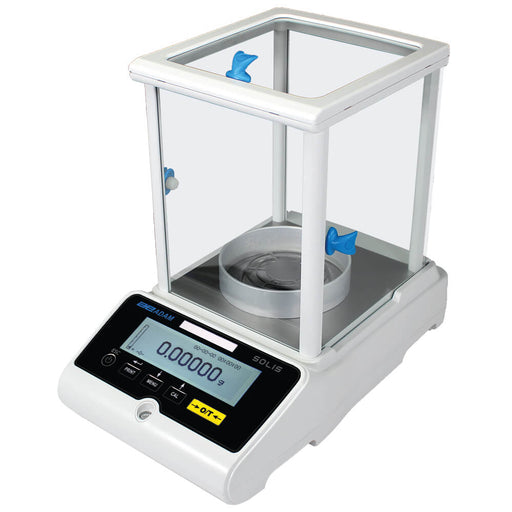What is an analytical balance?
Analytical balances are high precision weighing machines with up to 0.1mg readabilities. They are commonly regarded as a mid-range laboratory balance sorted by readability, starting with precision balances (0.1mg) and moving up to analytical balances (0.01mg), semi-microbalances (0.001mg) and microbalances (0.0001mg).
What is an analytical balance used for?
An analytical balance is used for advanced scientific weighing and are commonly found in research and development facilities, medical institutions and science laboratories. They typically include a wide range of features including accumulation, dynamic weighing and density determination for accurately weighing chemicals, compounds and liquids in tiny increments.
There are many types of analytical balance available, from standard analytical balances for conducting laboratory experiments to high-precision microbalances that can be used for more intricate analysis of specimens. Analytical balances with EC or Class II or III approvals are usually required by chemists and medical professionals for measuring chemicals used in vaccinations, or for ensuring quantities of medication are correct before they are sold, distributed and prescribed to patients.
What is the difference between an analytical balance and precision balance?
Analytical balances usually have a higher degree of precision (up to 0.0001g) than precision balance models (0.001g), as a result, analytical balances are typically more expensive and can complete with protective draft shields in order to protect the weighing chamber from vibrations and outside fluctuations.
When using an analytical balance, it is recommended that users work on an anti-vibration table for the most accurate results.
What are the parts of an analytical balance?
Modern analytical balances comprise of a weighing pan, front-level indicator, draft shield, connectivity ports as well as the keypad and display as standard. Most types of analytical balance can be customised with below balance weighing hooks and other hardware for performing chemical analysis and more complex weighing tasks.
In the case of Adam scales, weighing applications such as dynamic weighing and density determination can be accessed through the keypad menu.
How to calibrate an analytical balance?
The process for analytical balance calibration will differ depending on the model. Analytical balances with internal calibration can be easily calibrated by going into the balance's setup menu and selecting the internal calibration option; in some cases there may also be an option for auto-calibration that will allow the balance to automatically calibrate at set intervals. Analytical balances with external calibration will require regular use of approved calibration weights to ensure reliable and accurate results. Most high-end analytical balances will require E1 or E2 class calibration test weights.
Scaletec's analytical balances for sale
Scaletec currently stocks Adam Equipment's most popular range of analytical balances, the Solis and Luna.
Luna analytical balances are designed with an array of features and functions that accommodate most lab applications. The Luna range offers improved performance for faster, more accurate readings. Luna analytical balances have RS-232 and USB connectivity for recording GLP-compliant results.
Solis analytical balances have a graphic display which makes operation easier for many lab weighing applications.


